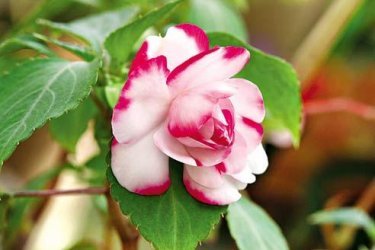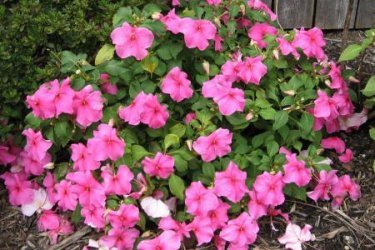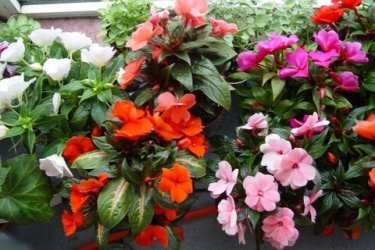Balsam
The main characteristic that unites all types of balsam is the high need for moisture. All representatives of this species bloom more actively if their roots are in a slightly cramped container. Impatiens are propagated very simply, and you can use both cuttings and sowing seeds.
And these cute plants also require careful attention to their person - a disease not noticed in a timely manner on one of the branches can very soon spread to the entire plant, ultimately causing its death.
Even successful treatment does not always save balsam from losing its decorative properties.
If you are growing this flower, you must not forget that it is very susceptible to diseases.
How to properly care for impatiens
Impatiens is the second name of the plant. It also indicates the need for especially careful treatment of the flower. The main principles that should be followed are partial shade and sufficient moisture. The ideal location is southeast; when placed on northern and western windows, high-quality lighting will be required.
Agricultural technology for growing balsam at home primarily involves organizing proper watering:
- They must be systematic; water must be poured even in excess.
- Experienced gardeners recommend using a deep tray; water draining from the pot should not be completely removed; moisture reserves can save the plant if you accidentally forget to water it.
- If there is wilting of the leaves, the first rehabilitation measure should be watering; after just a few hours you can observe how revival occurs.
But constant stagnation of water should not be allowed, as this can provoke the appearance of sciarids - tiny flying midges.
Indoor balsam: planting and replanting
It is better to fill the pot for impatiens with a substrate for flowering plants; oily, heavy soil rich in nitrogen compounds will contribute to the growth of green mass, but will slow down flowering.
For a young flower, you should not use a container that is too large - flowering will not begin until the plant has spread its roots to the entire volume of soil.
Several seedlings with flowers of different colors, planted in one pot, look beautiful; plants get along well in one container.
It is recommended to transplant balsam once a year, in the spring; if necessary, the procedure can be carried out in the fall. The transplant has a beneficial effect, the flower is rejuvenated, its growth becomes more active.
Growing balsam from seeds and cuttings
Both methods one and two are quite effective, but cuttings are more often used at home. The most beautiful and healthy shoots are carefully cut off and placed in a container with plenty of water. The survival rate of cuttings is almost 100%.
Garden balsam often reproduces by seeds, moreover, self-sowing, in order for the box with ripened seeds to burst, the slightest touch to it is enough.
Impatiens will decorate any interior with their bright blooms, and garden varieties look great in flower beds and borders, diluting the greenery of the garden landscape with incredibly bright shades of pink, lilac, and white.



